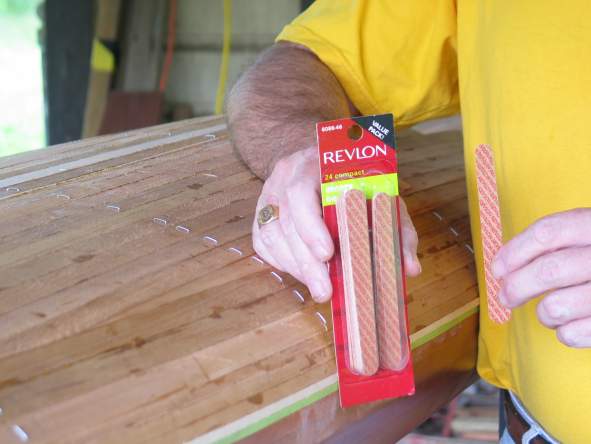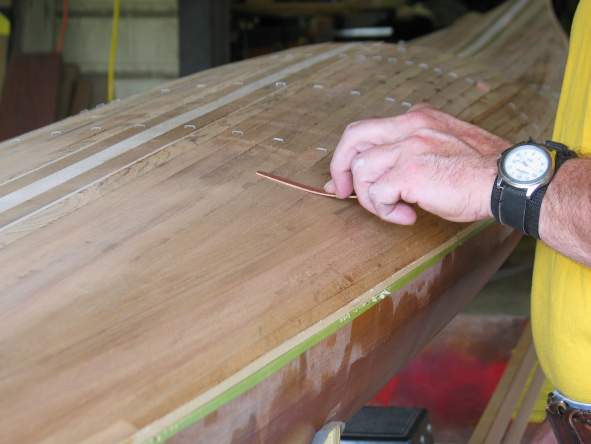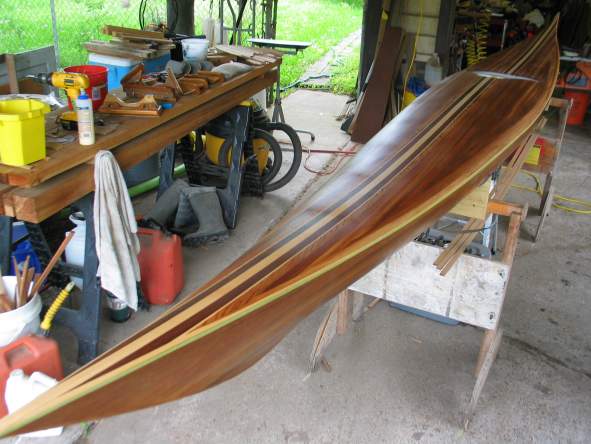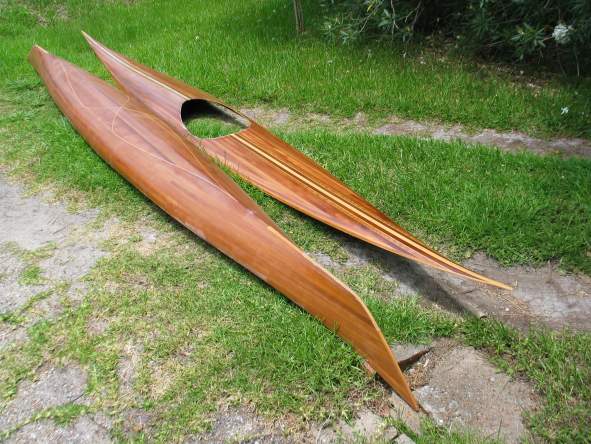|
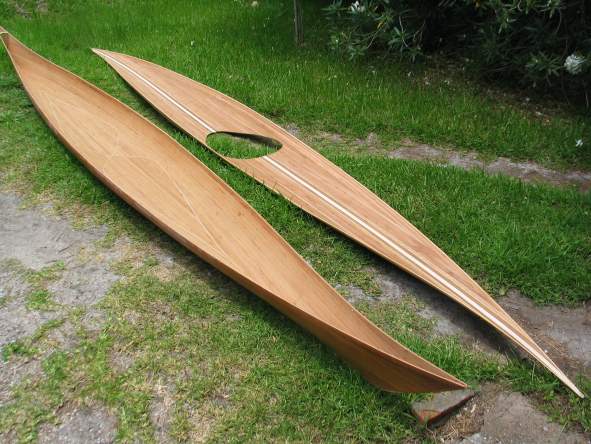
|
. . . and interior surfaces as yet bare naked, ready to be
smoothed, sealed, and fiberglassed also.
Once the 'glass work been completed, the two major components of the
project are finally ready for all the little parts that go into a boat
like this to begin being made or otherwise obtained, fitted, and
installed. Things like bulkheads and hatches fore and aft, which will form
the watertight compartments that provide tons of safety flotation to the
boat and offer dry storage in the bargain. The cockpit coaming, foot
braces, and all deck and cockpit rigging and outfitting will be fitted
while access to the deck and hull interiors is wide open.
Then the next major milestone will be "closing the clam", or
joining the hull to deck permanently. |
